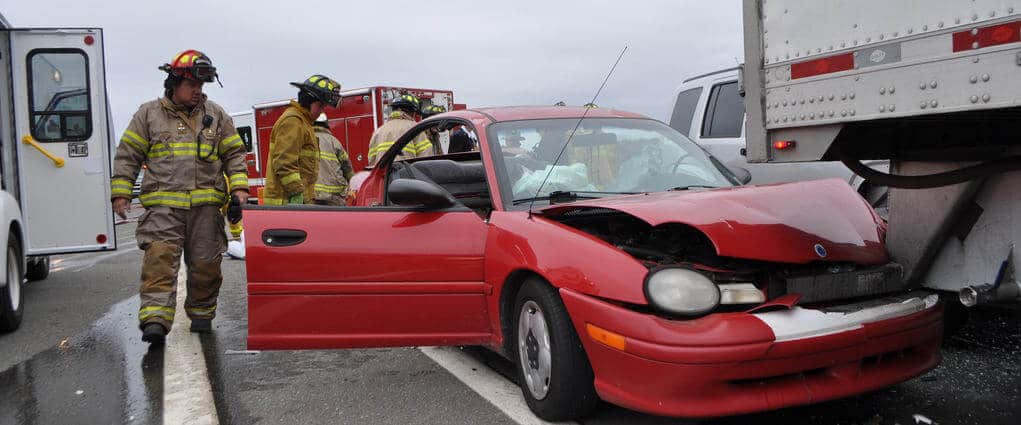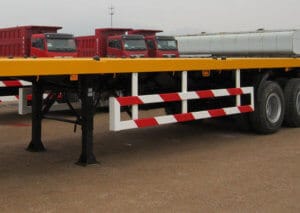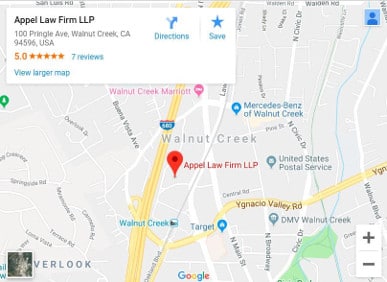
Main Takeaways:
- An underride truck crash is when a motor vehicle slides underneath a tractor-trailer in a collision.
- Underride guards that are attached to the back, front, and side of a tractor-trailer can stop motor vehicles from going underneath the truck in the event of an accident.
- The law states that trucks must have rear underride guards, but does not require front or side underride guards.
Underride accidents occur when passenger vehicles slide underneath tractor-trailers in collisions. These dangerous crashes often compromise the passenger compartments of vehicles and result in hundreds of deaths every year.
Despite the dangers, a solution exists: steel bars known as underride guards attached to the backs, fronts and sides of tractor-trailers that stop passenger vehicles from going underneath in the event of an accident. The U.S. government requires that tractor-trailers have rear guards but not front or side underride guards.
Trucking Industry Lobbying Quashes Proposed Rule Change
The U.S. Department of Transportation has considered requiring side underride guards on tractor-trailers since the 1960s, and in 2014, the National Transportation Safety Board recommended a rule requiring both side and front guards. The agency cited a study that found that side guards reduced the impact in nine out of 10 underride collisions.
The proposed new rule came in response to a petition by the Truck Safety Coalition and the mother of two teenaged girls killed in a 2013 underride crash. The sisters were on a Georgia interstate, headed to Texas with their brother and mother, when a large truck crashed into their Crown Victoria. As a result of the impact, the car spun and was pushed backward into the back of another truck. The two girls, who were in the back seat, were killed.
The proposed rule was not implemented after the trucking industry successfully lobbied the DOT to reject the recommendation. Industry representatives stated that the guards are not cost-effective and could result in dangerous weight increases to trailers and weakening of truck structures.
In Europe, the trucking industry has been required since 1994 to install front underride guards to protect occupants of passenger vehicles in collisions at combined speeds of 35 miles per hour. Europe also requires tractor-trailers to have side guards to provide protection for cyclists and pedestrians but not for passengers in vehicles.
Building Guards to Canadian Standards
When passenger vehicles slide under trucks during accidents, the upper portion of the passenger compartment is crushed because the impact bypasses certain portions of the vehicle structure. As a result, airbags and seat belts do not work, and passengers can suffer serious or fatal injuries to their heads and necks.
Many U.S. manufacturers have begun using stronger rear guards that comply with Canadian regulations. In both the United States and Canada, guards must stand up to a certain level of force at different points on the truck. However, Canadian rules require guards to withstand about double the force as the U.S. rules where the guard connects to a vertical support.
Insurance Institute for Highway Safety tests have found that guards built according to Canadian rules do a better job of preventing underride crashes unless the crashes occur at a trailer’s outer edges.
Better Rear Guards Needed
Tests have also demonstrated that rear underride guards save lives. In wrecks, passenger vehicles end up behind tractor-trailers — rather than crushed underneath them — when rear guards are installed. When cars slide underneath higher-riding tractor-trailers, serious injuries and deaths can result.
By stopping a vehicle from passing underneath a big truck, underride guards help preserve “survival space” in the car and stop contact between the back of the truck and the driver’s and passenger’s heads.
IIHS conducts its tests as part of a research program to create more-effective underride guards that will not break away or buckle when a vehicle collides with the rear of a truck. Research has indicated that a higher level of strength is needed than U.S. safety standards currently require to stop many of the underride crashes that occur at highway speeds.
No Protection for Side Underride Crashes

Engineers have developed multiple possible solutions to the dangers of side underride crashes with tractor-trailers, and some cities are starting to adopt the technologies rather than waiting for federal regulators to make changes. Boston and New York have begun installing side guards on trucks owned by the cities, including garbage collection trucks. In addition, they’re requiring that companies with city contracts install side guards to provide protection for motorcyclists, bicyclists and pedestrians.
IIHS has found that side and front underride guards could significantly reduce the risk of injuries in crashes with tractor-trailers. A 2012 study found that 63 percent of fatal crashes between passenger vehicles and big trucks involved the front of the truck. Twenty-two percent occurred at the side of the truck, and 15 percent happened in the rear.
Until the trucking industry and the federal government come together to establish standards, better rear guard protection — and any front and side underride protection at all — will not become a reality for motorists in California and across the country.
Have You Been Hurt in an Accident?
Accidents involving tractor-trailers can result in serious injury or death. If you or a family member have been hurt in a collision with a big rig, it’s important to work with experienced legal counsel to recover compensation for your injuries. To schedule a consultation at no cost to you, please contact Appel Law Firm LLP.
Photo Credit: digby fire dept cc

Speak Your Mind